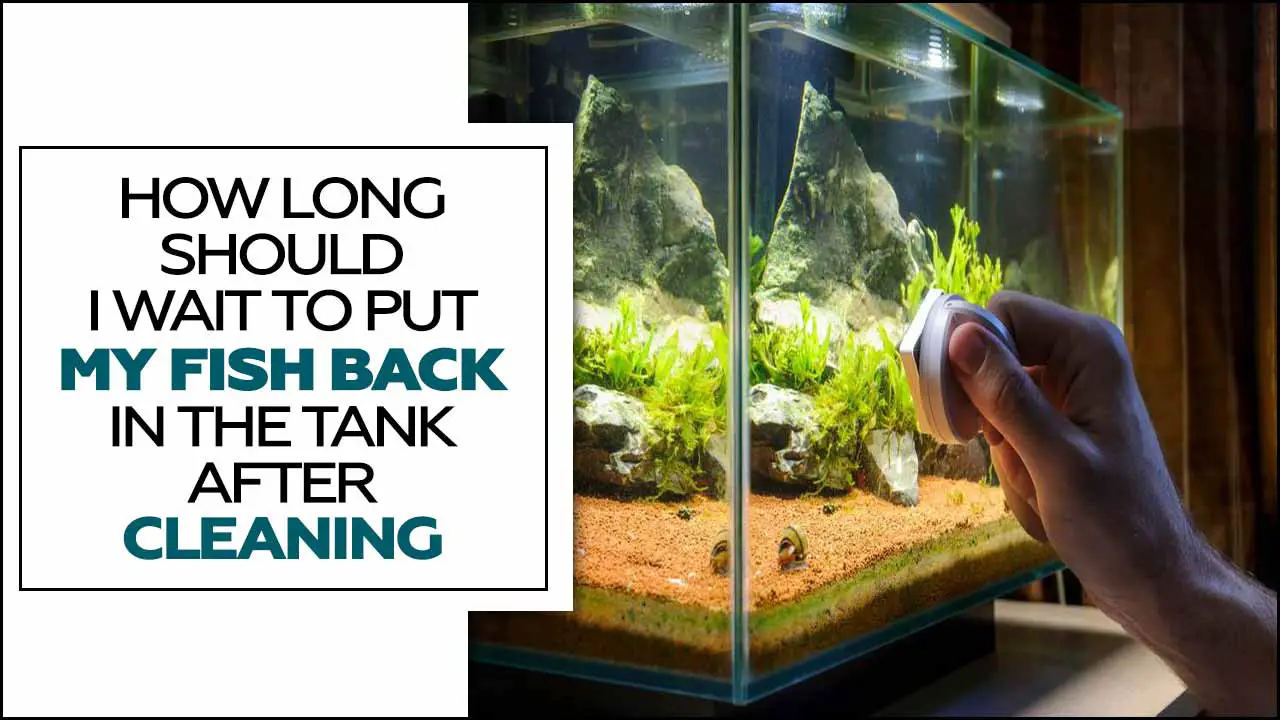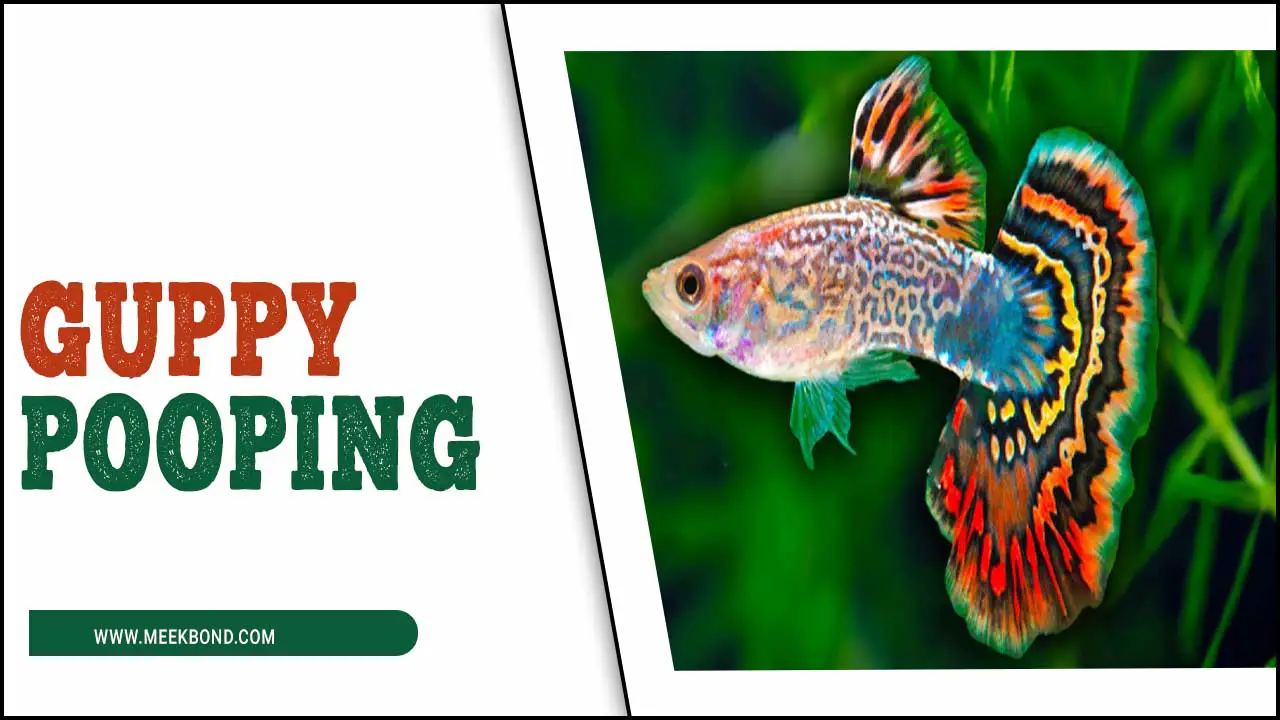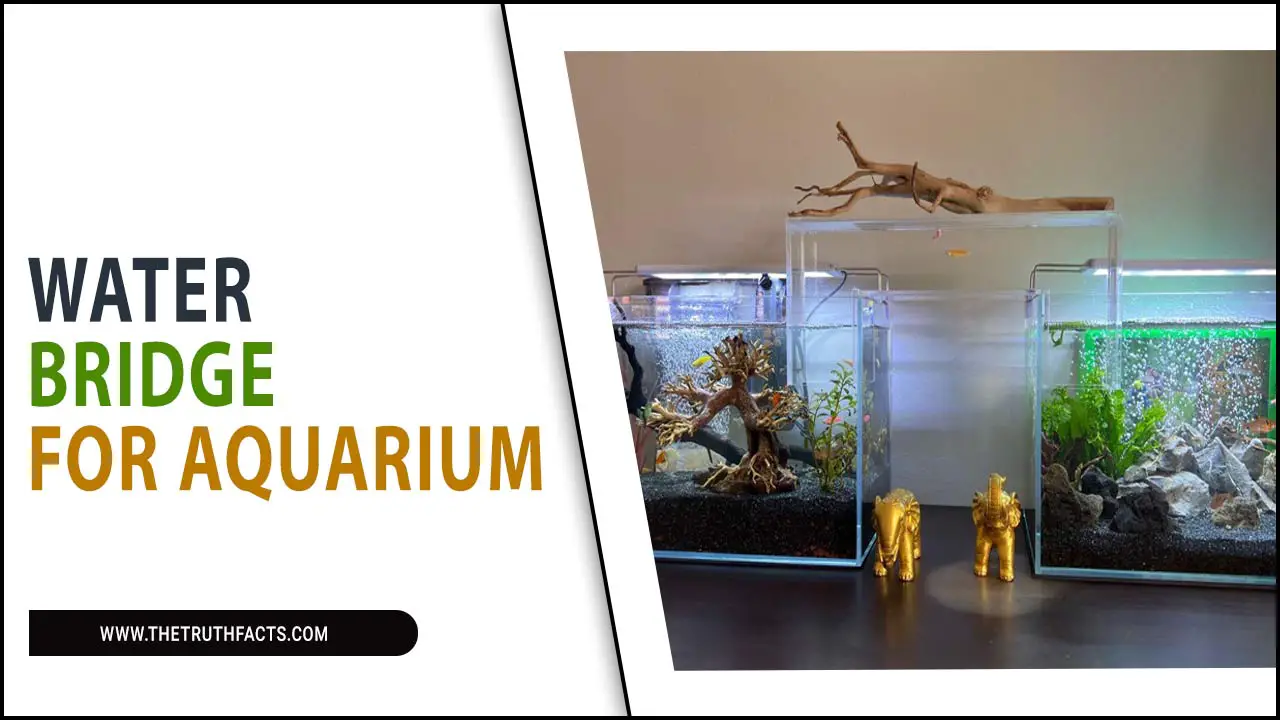Red Claw Crabs are fascinating creatures that are popular among aquarium enthusiasts. These freshwater creatures are popular for their vibrant orange-red claws, which add a pop of color to any aquarium.
However, owning a Red Claw Crab requires a significant amount of knowledge and care. Without proper care, these creatures can become stressed, fall sick, or even die. Therefore, it is imperative to understand the essentials of Red Claw Crab care.
We will also go over their feeding habits, which include both commercial and natural foods. Additionally, we will cover common health concerns and how to deal with them.
We will cover everything you need to know about red claw crab care. From creating the perfect environment for your crab to choosing compatible tank mates and identifying their gender, we have got you covered. So let’s dive in and ensure your red claw crab thrives in its new home.
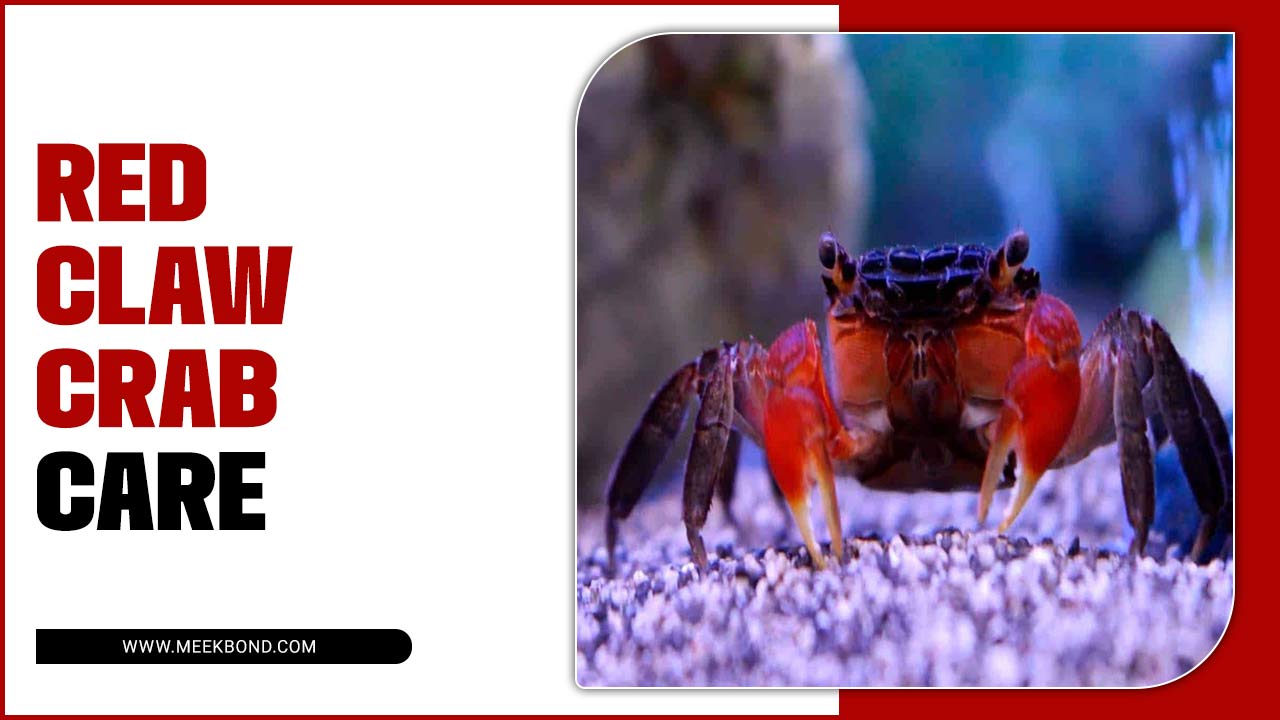
Overview Of Red Claw Crab
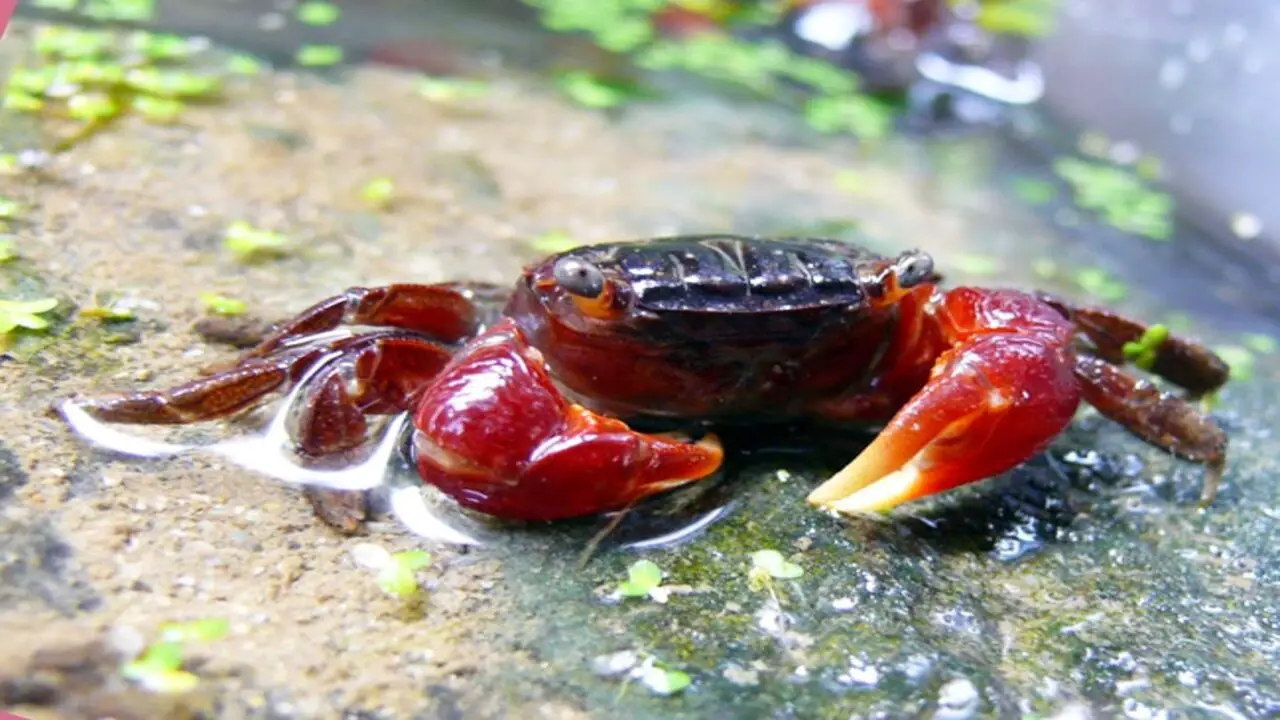
Taking care of red claw crabs requires some specific knowledge and attention to detail. These freshwater crustaceans make interesting and unique pets, but they have specific care needs that must be met in order for them to thrive.
Red claw crabs need a properly set up aquarium that mimics their natural habitat, including a land area for them to climb out of the water. They also require a balanced diet that includes both plant matter and protein sources.
Additionally, maintaining proper water conditions and temperature is crucial for their health. With the right setup and care, red claw crabs can be fascinating pets that bring joy to any aquarium enthusiast.
Origin And Habitat
Red claw crabs are freshwater crustaceans that are native to the swamps and mangroves of Southeast Asia. They are commonly found in countries such as Thailand, Malaysia, and Indonesia. In their natural habitat, red claw crabs live in brackish water, which is a mixture of fresh and saltwater.
They prefer areas with plenty of hiding spots, such as fallen leaves or roots. When kept as pets, it’s important to replicate their natural habitat as closely as possible by providing them with a tank that has both land and water areas, along with plenty of hiding spots and climbing surfaces.
Physical Characteristics
Red claw crabs are visually striking creatures with their distinctive red or brownish-red color and prominent front claws. Growing up to 4 inches, these crabs require adequate tank space to thrive. As semi-aquatic creatures need a tank setup that includes land and water areas.
Red claw crabs have an omnivorous diet, consuming plant and animal matter. To ensure their survival, it is essential to maintain appropriate temperature and humidity levels in their tank. By understanding the key physical characteristics of red claw crabs, you can create an ideal environment for these fascinating crustaceans.
Red Claw Crab Care: How To Care This Pet
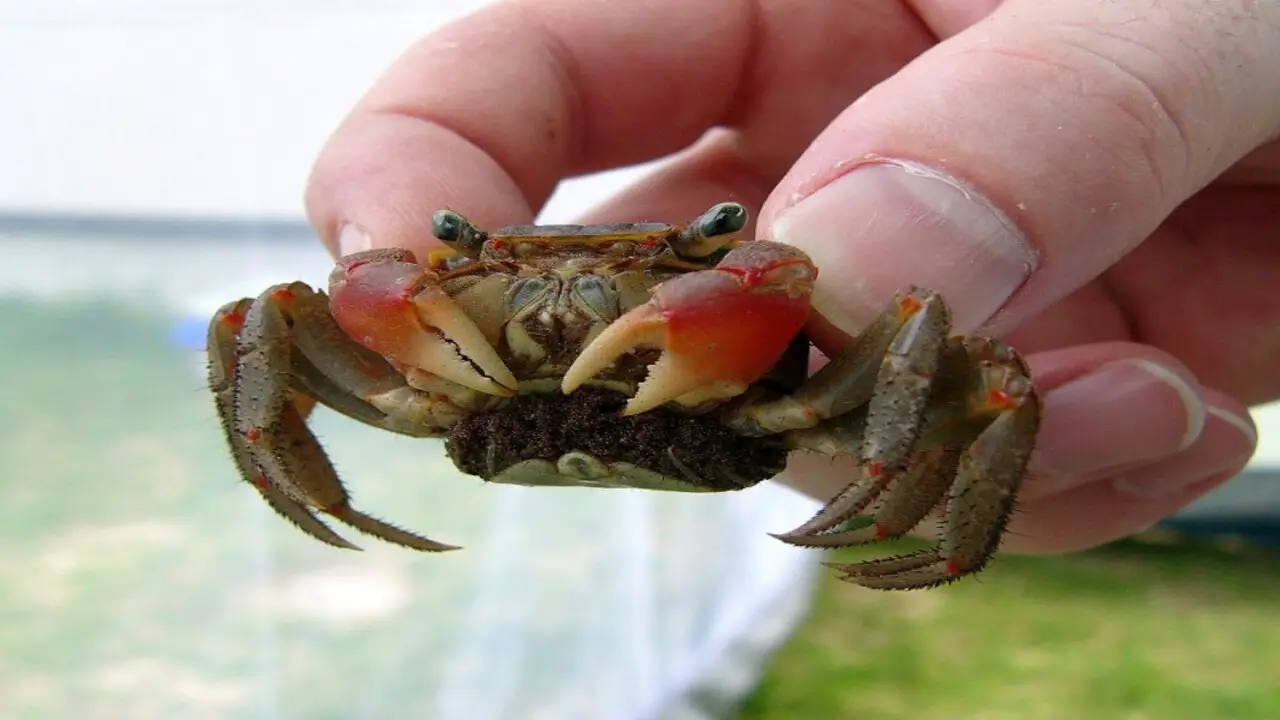
Regarding red claw crab care, several essential elements must be considered. First and foremost, tank size is crucial. It is recommended to provide a minimum tank size of 10 gallons per crab. This allows them enough space to move around and explore their surroundings.
- Another important factor is water quality. Red claw crabs require clean, brackish water with appropriate salinity levels.
- Monitoring pH and other water parameters is necessary to ensure their well-being.
- In terms of diet, a varied and balanced approach is key.
- Feeding them a combination of commercial crab food, frozen shrimp, and vegetables is recommended. This ensures they receive all the necessary nutrients for optimal health.
- Creating a suitable habitat is also essential for their overall well-being. They need a mix of land and water areas in their tank, hiding places and climbing structures.
- This mimics their natural environment and helps promote their natural behaviors.
- Lastly, maintaining the right temperature and lighting is important. The tank temperature should be between 75-85°F, and adequate lighting is necessary for their molting process and overall health.
By focusing on these essential elements of red claw crab care, you can ensure your crabs thrive in their aquarium environment.
Ideal Tank Size
To provide the ideal living conditions for Red Claw Crabs, it is recommended to house them in a tank of at least 10 gallons in size. A larger tank offers more swimming space and helps reduce territorial fights among crabs.
As crabs increase, the tank size should be adjusted accordingly to ensure their comfort and well-being. To maintain optimal water conditions, it is advisable to equip the tank with a well-filtered system and a heater.
This will help regulate the water temperature, especially since Red Claw Crabs thrive in brackish water. Additionally, adding a substrate layer and hiding places such as rocks and plants can enhance their natural environment. By creating an ideal tank setup, hobbyists can ensure the longevity and happiness of their Red Claw Crabs.
Maintaining Optimal Water Parameters

To ensure the well-being of your Red Claw Crabs, it is essential to maintain optimal water parameters. These crustaceans require specific conditions to thrive. The ideal water temperature should be kept between 75-80°F for optimal health. Additionally, the pH level should fall within the range of 7.5-8.5 to create a suitable habitat.
Salinity levels should be carefully monitored and maintained alongside temperature and pH between 1.005 and 1.015. To accurately assess these parameters, it is recommended to use a reliable water testing kit. Regular monitoring will help prevent disease and contribute to the longevity of your Red Claw Crabs.
By ensuring the proper water conditions, you are mimicking their natural habitat in mangrove swamps and estuaries in Asia. This attention to detail creates an environment where Red Claw Crabs can flourish and showcase their fascinating behavior. Remember, the well-being of your aquatic animals depends on the quality of their living conditions.
Heating And Lighting
Maintaining the right heating and lighting conditions in a Red Claw Crab tank is crucial for their well-being. These crabs require a warm and humid environment, achieved through a heater and thermometer. Proper lighting is also essential as it mimics their natural habitat and helps regulate their metabolism and behavior.
UVB bulbs can be handy to prevent shell problems and promote overall health. It’s important to avoid overheating and ensure adequate lighting, as these factors can lead to stress, illness, and even death.
If you’re unsure about the specific heating and lighting needs for your crab tank, it’s always best to consult with a veterinarian or an experienced crab owner who can provide guidance tailored to your specific setup.
Feeding And Diet
Proper feeding and diet are crucial for the care of red claw crabs. These omnivorous creatures require a balanced diet that includes both plant matter and protein sources.
It is recommended to provide them with a variety of foods such as high-quality fish flakes, shrimp pellets, algae wafers, and fresh vegetables like spinach or zucchini. Additionally, offering occasional treats like bloodworms or brine shrimp can help provide essential nutrients.
It is important to avoid overfeeding, as excess food can pollute the water and negatively impact the crab’s health. Observing their eating habits and adjusting their diet accordingly is key to ensuring they receive adequate nutrition for optimal health and well-being.
Creating The Perfect Environment
Creating the perfect environment for your red claw crab is essential to ensuring its health and well-being. Begin by selecting the right tank size and setup, considering this crustacean’s needs. Red claw crabs require a brackish water aquarium, so knowing the appropriate water conditions and temperature requirements is important.
Equip your tank with essential filters and heaters to maintain a healthy environment. Attention to lighting and substrate options contributes to the crab’s comfort.
Additionally, provide appropriate feeding and care, offering the best types of food and establishing a feeding schedule. By creating the ideal environment, you can ensure that your red claw crab thrives and enjoys a long and happy lifespan.
Selecting The Right Substrate For Your Tank
The substrate you choose plays a vital role when it comes to the habitat of your red claw crab. The substrate is the foundation for your crab’s tank, creating a natural and comfortable environment. Mimicking the crab’s natural habitat is essential, so opt for substrates like sandy or rocky bottoms.
Avoid using sharp gravel or sand that clumps together, as these can harm your crab. Enhance the natural feel of the habitat by adding live plants to the substrate. Not only do they create a visually appealing environment, but they also offer hiding places and provide oxygen. Regularly cleaning and maintaining the substrate is crucial to ensure a healthy and safe living space for your red claw crab.
Decorating The Tank
To ensure the well-being of your red claw crab, create a comfortable tank environment. Decorate the tank with live plants, rocks, and driftwood. These provide hiding spots and enhance aesthetics. Additionally, provide hiding spots such as caves and tunnels for your crab to feel secure.
Avoid sharp or small items that could harm or trap your crab. Research your crab’s specific needs for optimal decor. By creating a natural habitat and ample hiding spots, you’ll make your crab feel at home and enhance visual appeal. Regularly maintain and clean the tank for a healthy environment.
Choosing Compatible Tank Mates
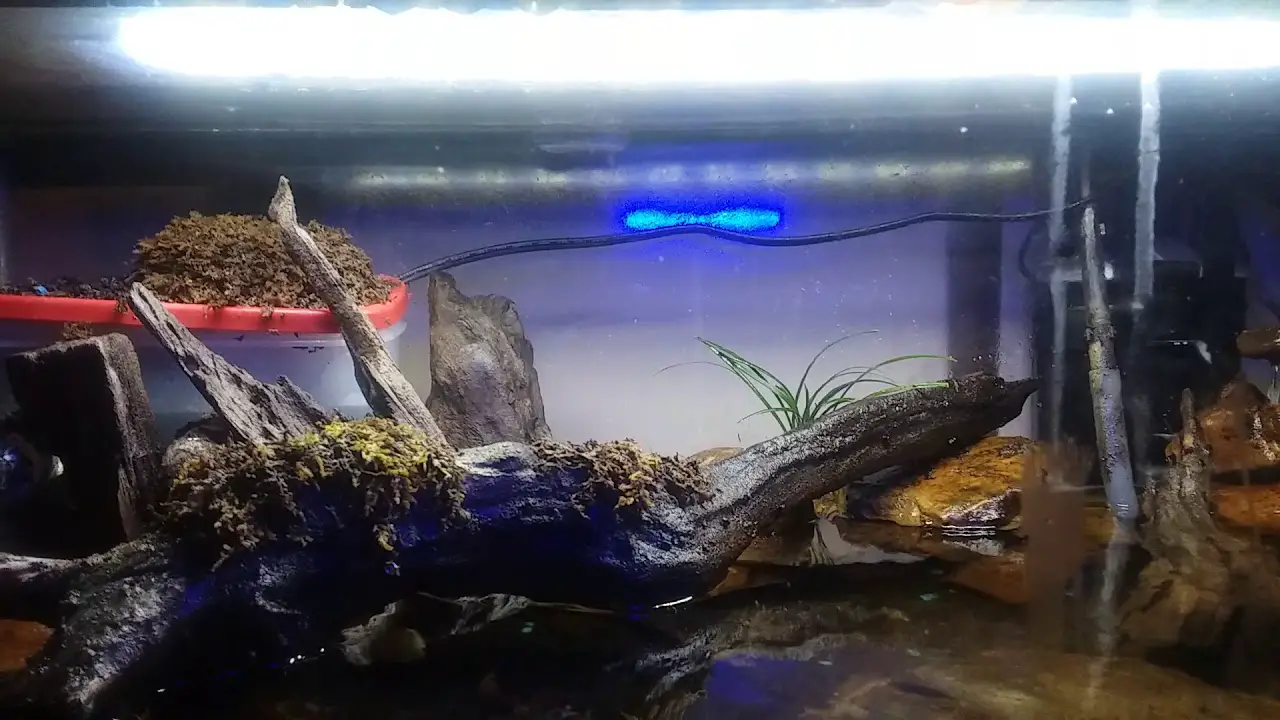
When choosing tank mates for your Red Claw Crab, compatibility is key. Red Claw Crabs tend to be aggressive towards other species in the aquarium, so selecting companions that can coexist peacefully is important. Consider the size and temperament of potential tank mates to ensure a harmonious environment.
Avoid keeping fish or crustaceans with long, delicate fins that the crab’s claws could easily nip. Instead, select snails, shrimp, or small non-aggressive fish as suitable tank mates.
Implementing proper acclimation and introduction techniques can help minimize aggression between tank mates. You can create a balanced and thriving aquarium community by carefully considering compatible species.
Species To Avoid As Tank Mates
When choosing tank mates for your red claw crab, there are certain species you should avoid. Aggressive fish can threaten your crab’s well-being, potentially harming or even killing it. It’s also best to keep your red claw crab separate from other crustaceans to prevent fighting or competition for resources.
Additionally, small fish and shrimp risk being eaten by the red claw crab, so they should be avoided as tank mates. Bottom-dwelling species, like catfish, can disturb the crab’s habitat and should not be added to the tank. Instead, opt for peaceful and non-aggressive fish such as neon tetras or guppies, as they can make good companions for your red claw crab.
Behavior And Social Interactions
Understanding the behavior and social interactions of red claw crabs is crucial for their proper care. These crabs are popular to be highly social creatures and thrive in groups, so it is recommended to keep them in pairs or small groups.
They are also quite active and require plenty of space to explore and climb. Red claw crabs are pop;ular for their territorial nature, so it is important to provide ample hiding spots and caves in their habitat to prevent any aggression among them.
Additionally, observing their behavior can give valuable insights into their overall health and well-being. For example, if a crab becomes unusually aggressive or withdrawn, it may indicate an underlying issue that needs attention. By understanding their behavior and providing a suitable environment, you can ensure that your red claw crabs stay happy and healthy.
Breeding Challenges
Breeding red claw crabs can present some unique challenges. While these fascinating creatures are popular for their bright colors and intriguing behaviors, successfully breeding them can be quite difficult. One of the main challenges is creating the ideal environment for breeding to occur.
Red claw crabs require specific water parameters and temperature conditions in order to mate and reproduce. Additionally, it can be challenging to differentiate between male and female crabs, as their physical characteristics are not always easily distinguishable.
Furthermore, even if successful mating occurs, raising the offspring can be tricky as they have specific dietary requirements and need a separate tank to grow and develop properly. Despite these challenges, with proper research, understanding, and dedication, it is possible to breed red claw crabs successfully.
Lifespan And Health Expectations
Red Claw Crabs typically have a lifespan of 2-3 years when kept in captivity. You can extend their lifespan by providing proper care, such as maintaining water quality and offering a nutritious diet. Healthy Red Claw Crabs exhibit active movement, a healthy appetite, and clear eyes.
However, watching out for common health issues like molting problems and shell damage is important. Regular observation and maintenance are crucial to ensure the well-being of your Red Claw Crab. Remember, a happy and healthy crab will thrive in your aquarium setup.
Distinguishing Male From Female Red Claw Crabs
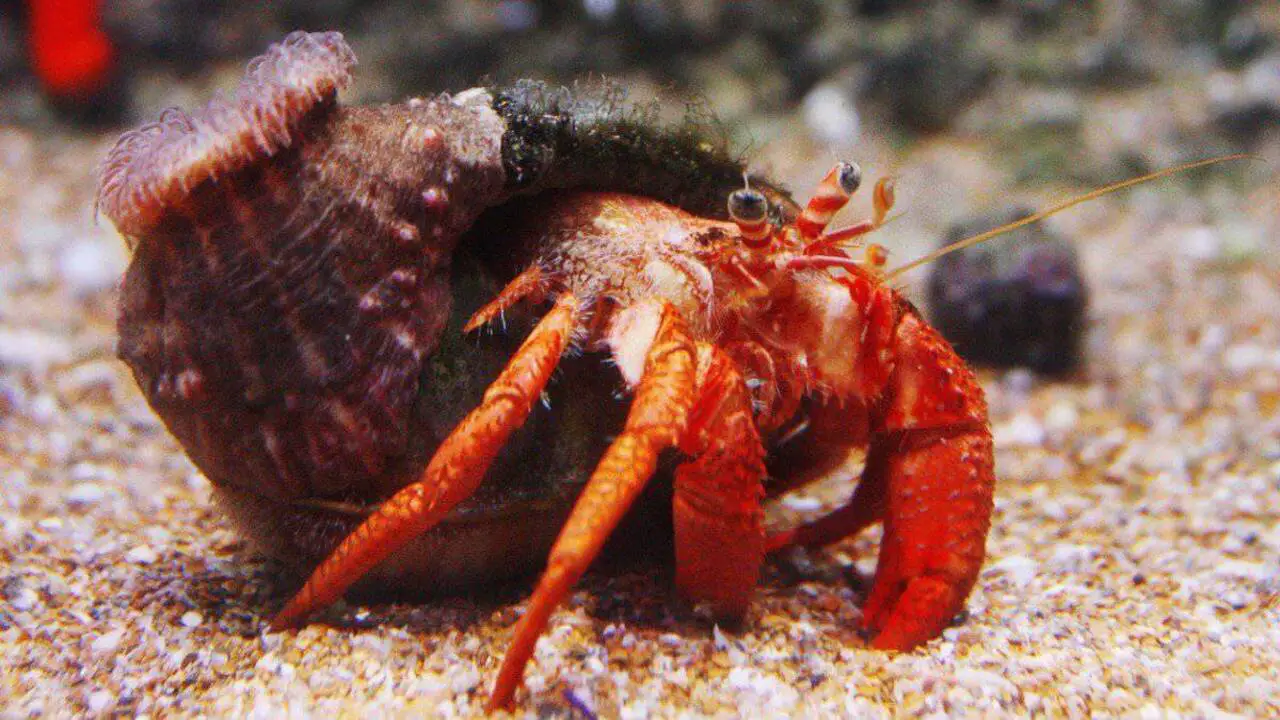
When determining the gender of red claw crabs, there are a few key characteristics to look out for. The size and shape of the crab’s claws can be a reliable indicator – male crabs tend to have larger and more elongated claws, while female claws are generally smaller and more rounded.
Another distinguishing factor is the color and shape of the abdomen. Male crabs typically have a narrow, triangular-shaped abdomen, whereas females have a wider and rounder abdomen.
Additionally, checking for a “flap” on the underside of the crab’s shell can help identify males, as this is a characteristic feature. It is important to note that it may be easier to distinguish male and female crabs when fully mature, as their physical features become more pronounced.
Why Gender Identification Matters In Red Claw Crab Care
It is important to identify the gender of red claw crabs due to their different care needs based on physical differences. Male crabs have larger claws and a narrower abdomen, while females have smaller claws and a wider abdomen.
Understanding the gender of your crab is essential for providing appropriate tankmates and creating suitable breeding conditions. Although gender identification can be challenging, it can be done by observing physical characteristics and behavior.
By paying attention to their gender-specific needs, you can ensure your red claw crabs’ overall well-being and happiness. Proper care and attention to detail will lead to a thriving and healthy tank environment.
Common Health Issues
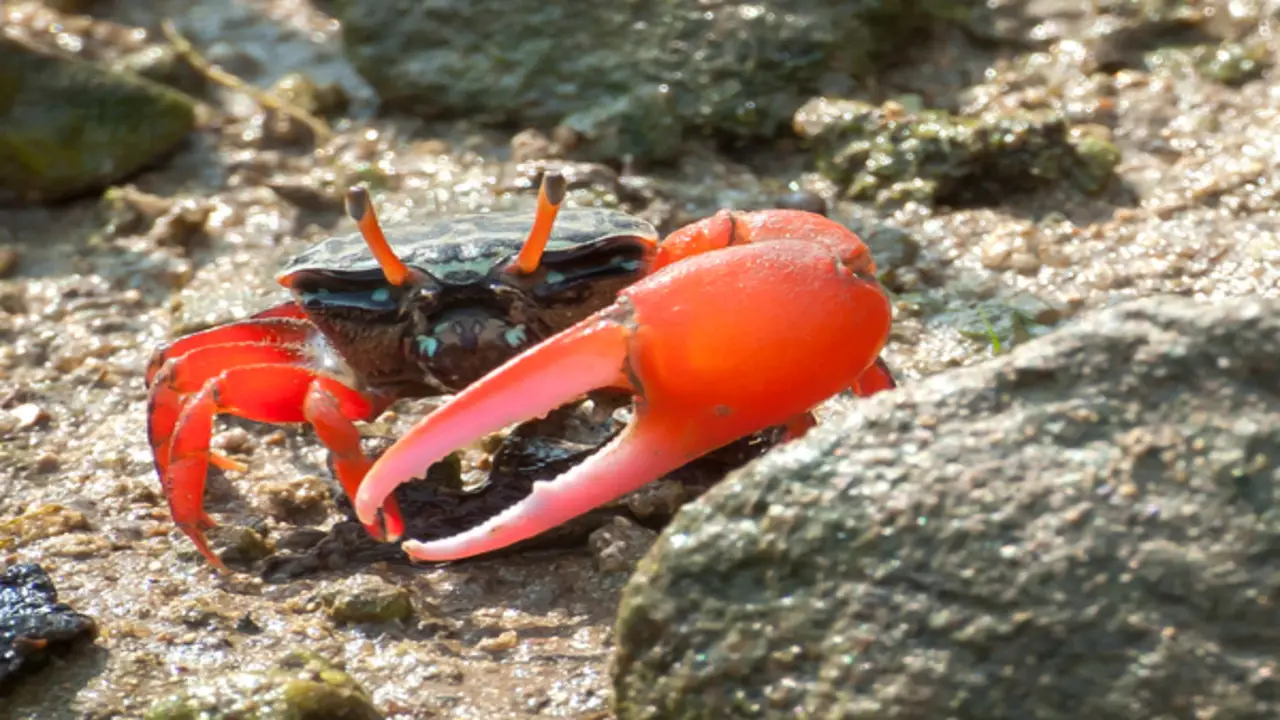
Taking care of red claw crabs involves being aware of common health issues that they may face. One common health issue is shell rot, which is caused by poor water quality and can lead to the deterioration of the crab’s exoskeleton.
It is important to monitor water parameters and provide a clean and well-maintained tank to prevent shell rot. Another common issue is molting problems, where the crab may have difficulty shedding its old exoskeleton. This can be caused by improper nutrition or insufficient humidity in the tank.
Providing a varied diet and maintaining proper humidity levels can help prevent molting problems. Additionally, red claw crabs are susceptible to parasitic infections and bacterial diseases, so it is crucial to quarantine new additions to the tank and maintain good hygiene practices. Regular observation and prompt veterinary care can help address these health issues and ensure the well-being of red claw crabs.
Conclusion
Caring for Red Claw Crabs requires attention to detail and creating an environment miming their natural habitat. Every aspect contributes to their well-being, from maintaining optimal water parameters to providing the right heating and lighting.
Additionally, understanding the gender of your Red Claw Crab is important for their care and compatibility with tank mates. You can ensure a harmonious and thriving tank ecosystem by selecting the right substrate, decorating the tank, and choosing compatible companions.
Remember, proper care and attention will result in happy and healthy Red Claw Crabs that will bring joy to your aquarium. We hope you now understand red claw crab care.
Frequently Asked Questions
Are Red Claw Crabs Easy To Care For?
Red claw crabs are relatively easy to care for. They require a habitat with land and water areas, a heater, and a filter. A varied diet consisting of commercial crab food and fresh fruits/vegetables is important. Regular tank maintenance, such as water changes and cleaning, is necessary for their well-being.
What Do Red Claw Crabs Need In Their Tank?
To properly care for red claw crabs, their tank should have land and water areas. The water should be brackish, with a mixture of saltwater and freshwater. It’s important to provide hiding places and climbing structures for them. Maintaining a temperature between 75-85°F and ensuring proper filtration is also crucial.
What Do Red Claw Crabs Need To Survive?
To ensure the survival of red claw crabs, provide them with a spacious freshwater aquarium. Their diet should include plant and animal matter, like algae wafers and shrimp pellets. Proper water quality is crucial, including temperature, pH level, and filtration. Additionally, create hiding spots and climbing structures in their tank.
Do Red-Clawed Crabs Need Land?
Red-clawed crabs require both land and water in their habitat. The recommended ratio is 1:3, with a suitable substrate like coconut fiber or peat moss for the land portion. Providing hiding spots or shelters in the land area for the crabs is important.
Are Red Claw Crabs Hard To Keep?
Keeping red claw crabs can be challenging for beginners due to their specific care needs. These freshwater creatures require an aquarium with land and water areas, a balanced diet of plant and protein-based foods, and regular water changes with proper filtration.

Aquarium passion is all about connecting with the aquatic life and providing education to the public on the importance of these creatures. We showcase a wide variety of marine life through our exhibits as well as working with schools to provide unique learning opportunities for students of all ages.

